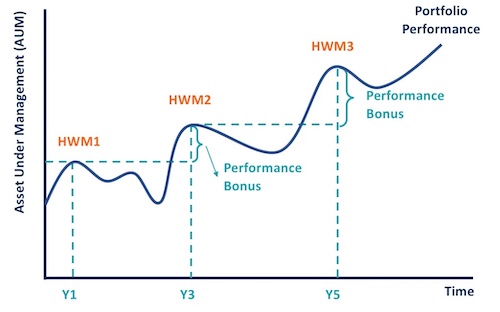- CFA Exams
- 2026 Level I
- Topic 8. Alternative Investments
- Learning Module 1. Alternative Investment Features, Methods, and Structures
- Subject 3. Investment and Compensation Structures
Why should I choose AnalystNotes?
Simply put: AnalystNotes offers the best value and the best product available to help you pass your exams.
Subject 3. Investment and Compensation Structures PDF Download
Partnership Structures
A limited partnership (LP) is a partnership made up of two or more partners. It is often used as an investment vehicle in alternative investments such as hedge funds and real estates.
- The general partner (GL) oversees and runs the business. It has unlimited liability and has full management control of the business.
- The limited partners (LPs) do not partake in managing the business. They have limited liability up to the amount of their investment. This is the key advantage to LPs - their personal liability is limited.
A LP offers the ability to raise capital without giving up control. Investments in LPs are less regulated (e.g. less reporting, less formal structure) than offerings to the general public.
Compensation Structure
The general partner is typically compensated with an asset management fee and an incentive fee.
The asset management fee is usually stated as a percent per annum of assets under management. For private equity funds this is typically as a percent of committed capital, or invested capital.
The incentive fee is typically stated as a percent of profits. Profits are normally defined as the gross profits of the investments after returning partnership expenses including the asset management fee.
Usually, a hurdle rate of return must be achieved before sharing begins. So, a typical deal might be stated as "20% carry over an 8% pref with a catchup". This means that the partnership has to earn at least 8% return before the GP earns any carry. Above an 8% return, the GP gets the profit (i.e. the catchup) until the ratio of profit split is 20% to GP. Thereafter, the profits are split 80% to the LPs and 20% to the GP. This is the nearly universal structure of private equity sponsor compensation.
Common Investment Clauses, Provisions, and Contingencies
Catch-Up: The LPs receives 100% of the profits until their preferred return hurdle is reached. Above the hurdle, the GP receives 100% of the profits until he is "caught up" to his performance fee.
High-water mark is the highest level of value reached by a fund. It is often used as a threshold to determine whether a fund manager can gain a performance fee. Investors benefit from a high-water mark by avoiding paying performance-based bonuses for poor performance or for the same performance twice.

An investor who buys into a fund at a net asset value (NAV) below the high-water mark will enjoy the upside from the subscription NAV to the high-water mark without paying a fee. This situation is known as a "free ride." It allows new investors to benefit from buying into an under-performing fund without penalizing existing investors.
High-water mark vs. Hurdle rate:
- Under the high-water mark clause, the performance fee of the current term can be impacted by the previous performance of the fund.
- Under the hurdle rate, the current performance bonus is independent of the fund's historical return.
How does a partnership allocate investment returns? A waterfall defines the pecking order in which distributions are allocated to limited and general partners.
Usually, the GP receives a disproportionately larger share of the total profits relative to GP's initial investment once the allocation process is complete. This is done to incentivize the fund's GP to maximize profitability for its investors.
There are two common types of waterfall structures:
- deal-by-deal (American) favors the GP. GP gets paid before LPs get all their invested capital and preferred return.
- whole-of-fund (European) is more LPs friendly. The distribution is applied at the fund level. LPs get their capital and preferred return before the GP gets any profits.
In private equity, clawback refers to the LPs' right to reclaim part of the GP's carried interest, in cases where subsequent losses mean the GP received excess compensation. Clawbacks are typically calculated when a fund is liquidated.
User Contributed Comments 0
You need to log in first to add your comment.

You have a wonderful website and definitely should take some credit for your members' outstanding grades.

Colin Sampaleanu
My Own Flashcard
No flashcard found. Add a private flashcard for the subject.
Add